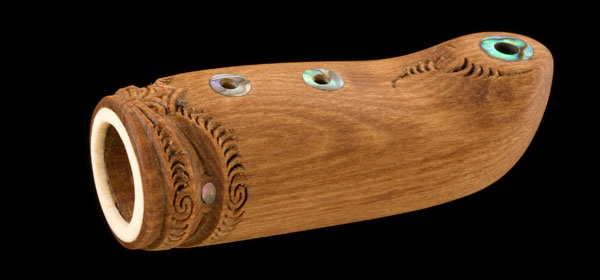This small instrument (8 to 10 cm) is curved at one end, because originally this flute was made out of a whale tooth. It can also be made out of wood, stone, clay. It has one open end like the koauau and one small opening at the curved end. It has 2 to 4 fingerholes.

Nguru
A small wooden, stone or bone flute shaped like a whale's tooth and sometimes made from an actual tooth. It is from 2 to 6 in. in length, wide at the blowing end and tapering to the lower where it is slightly turned up. It has two or three fingerholes and an extra hole bored on the underside, near the curved end, through which a cord could be passed so that it could hang round the owner's neck. It is played in the same way as a koauau and produces a similar pure flute-like sound. The nguru is sometimes classified as a nose flute perhaps because the word “nguru” means to sigh, moan, or snore. This is unlikely because the large end is too wide even for a stout Polynesian nostril and, if the curved end were placed in that same position, the flute would lie at an impossible angle for the player to manipulate the fingerholes.
By using the three fingerholes of a koauau or nguru, a European player can produce, quite naturally, the four notes of a tetrachord; but wind instruments are of no exact pitch and the sequence of sounds can be varied according to the pressure of the breath and the actual intervals the player has in mind. There is evidence to show that Maori flute and trumpet songs were in no way different from their chants and waiata and consisted of decorations round a pivot note. An old gramophone recording of flute playing in the possession of the Dominion Museum, Wellington, proves this point and displays a three-note tune which remains within the compass of less than a minor third.